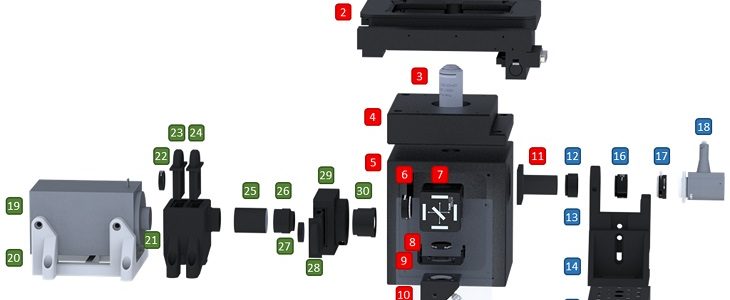miCube, not to be confused with µCube, is an a open and modular framework for the design and assembly of florescence microscopy optical devices, including devices with TIRF and widefield as well as an advertised confocal capabilities. The miCube has a peer-reviewed manuscript demonstrating it’s performance written by Koen Martens, Sam van Beljouw, Simon van der Els, Jochem Vink, Sander Baas, George Vogelaar, Stan Brouns, Peter van Baarlen, Michiel Kleerebezem & Johannes Hohlbein.
In it’s default configuration, the miCube costs $120,000 as laid out in this beautiful component table. This may seem fairly expensive for a website called Lab On The Cheap, even if it is replacing equipment that can cost five times as much. However that price tag includes some expensive equipment that you could replace with cheaper alternatives. The big items are a $20,000 TIRF microscope objective , a $17,000 automated XY stage with Z-piezo, a $16,000 Andor Zyla camera, and a $62,000 Omicron laser box with four wavelengths.
At first glance, building the miCube is not a particularly well documented process, and presumably is currently geared towards those who already have extensive microscopy experience. The methods section of the miCube manuscript is the closest you will get to assembly instructions manual . Many portions of the device can be 3D-Printed or CNC milled using the STL files hosted on the projects GitHub, and a clean list of parts with links is provided, but that’s about it.
What miCube does have is a lot of proof that it works and works well. The Hohlbein Lab hosts a list of various other labs that have built and are using miCubes. The project is often praised not just by its creators, but by its adopters, and throughout the website contacting both the adopters and Hohlbein lab is encouraged.
So this isn’t a great microscope as a side project on your bench desk or in your garage. However if your building up the microscopy capabilities of a medium sized research lab, and want an open-source high performance TIRF microscope, this design has a lot of people vouching for it.
